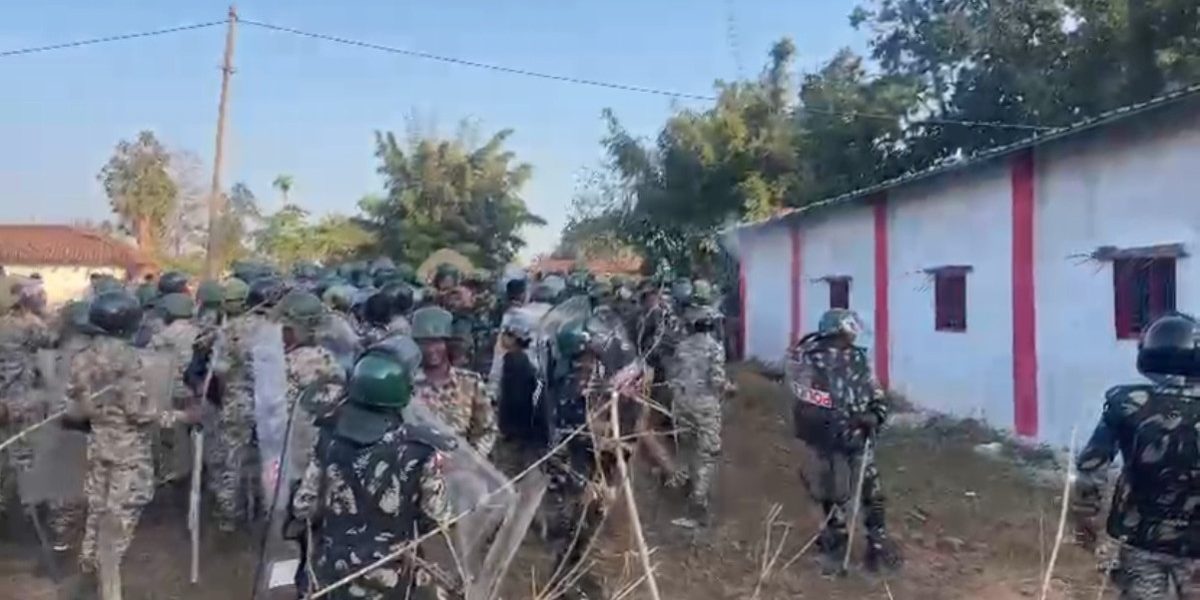
New Delhi: The Allahabad high court on Thursday, May 12, hauled up a Bharatiya Janata Party leader for his petition seeking a study along with directions to the Archaeological Survey of India to open the doors of 22 sealed rooms within the Taj Mahal to enable research that would lead to the alleged “real history” of the structure.
A division bench of Justice D.K. Upadhyay and Justice Subhash Vidyarthi of the Lucknow bench of the high court dismissed the petition and added that the petitioner had called upon the court “to give a verdict on completely a non justiciable issue,” according to Bar and Bench.
The petition had been filed by Rajneesh Singh, who news outlets have identified as the ‘media in-charge’ of BJP’s Ayodhya unit.
LiveLaw had earlier reported that the petition contends that “some Hindu groups and reputable sants” have claimed that the Taj Mahal is actually an old Shiva temple which was known as ‘Tejo Mahalaya’ and is not, as is popularly thought, a tomb which was commissioned by Mughal emperor Shah Jahan in memory of his wife, Mumtaz Mahal.
Singh’s counsel sought the constitution of a ‘fact-finding committee’ to study and publish findings that would get to the bottom of the alleged “false history” of the Taj Mahal.
Such debates were “meant for drawing rooms and not for a court of law,” the court said, according to LiveLaw.
‘Where is this right?’
“My main concern is about the closed rooms and we all should know what’s there behind those rooms,” Singh’s counsel said.
When he repeated, “Please allow me to go to those rooms and do the research,” the bench asked, “Tomorrow you’ll come and ask us to go to the chambers of honourable judges of this court?”
“Please don’t make mockery of the PIL system,” Bar and Bench reported the court having added.
The high court also asked whether it was for it to decide who built the structure and asked the petitioner not to cite “historical facts which [he] believe[s].”
When the petitioner claimed that his right to know about the closed rooms of the Taj Mahal and his freedom to get information were being violated, the court questioned this claim.
“Where is this right? To get a particular study conducted?” the bench asked.
“Go and research. Please enrol yourself in MA, then go for NET, JRF and if any university denies you to research on such topic then come to us,” the bench added.
The NET is the examination for determining eligibility for the post of assistant professor or Junior Research Fellowship or JRF award in Indian universities and colleges.
When the petitioner’s counsel asked for more time to cite certain RTI judgments, the court noted that Singh’s plea had been widely publicised.
“The petition filed by you been doing rounds in the media for days and now you’re doing this? We’ll not adjourn and hear after lunch,” the bench said, according to the report.
After hearing resumed post-lunch, the bench noted that what the petitioner sought did not come under the RTI Act.
“What are you seeking is exploration of facts by way of a committee. That’s none of your rights and it’s not under the ambit of RTI Act,” the bench said, according to Bar and Bench.
The bench also mentioned that this request was denied by relevant authorities citing security reasons and that the petitioner could challenge it. Indeed, responding to a Right to Information (RTI) request, the ASI had noted that the rooms have remained closed due to security reasons.
The Uttar Pradesh government – formed by the BJP itself – opposed Singh’s plea, raising a preliminary objection on the matter’s “territorial jurisdiction”. LiveLaw has reported that it also told the court that a similar petition is pending before an Agra court too.
Earlier stirrings
The Taj Mahal’s history, along with those of the Gyanvapi Masjid in Varanasi and the Babri Masjid in Ayodhya, have been rallying points in Hindutva politics for a while now.
In January 2021, four activists from a Hindutva outfit were arrested for waving saffron flags within the premises of the Taj Mahal after a video showing the same went viral on social media.
In 2020, activists from the same organisation entered the premises and sprinkled gangajal (water from the Ganga, considered holy) to “purify” the Taj Mahal.
In November 2018, a group of women from Rashtriya Bajrang Dal reportedly performed aarti and sprinkled gangajal around the Taj Mahal to protest the offering of prayers by Muslims on a weekday.
According to news reports, in 2008, a group of Shiv Sena activists performed rituals inside the Taj Mahal, following which they were arrested by the Uttar Pradesh Police and later released.
In 2017, BJP leader Vinay Katiyar had claimed that the 17th century monument was constructed by Mughal emperor Shah Jahan by destroying a Hindu temple.
In August 17, 2017, the Archaeological Survey of India told the Agra court that the Taj Mahal had never been a temple and was always a Muslim tomb.
This article first appeared on thewire.in





